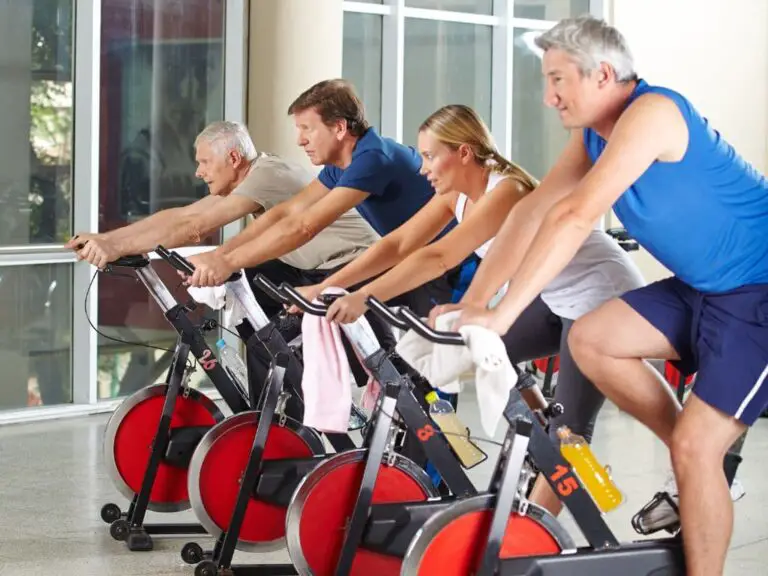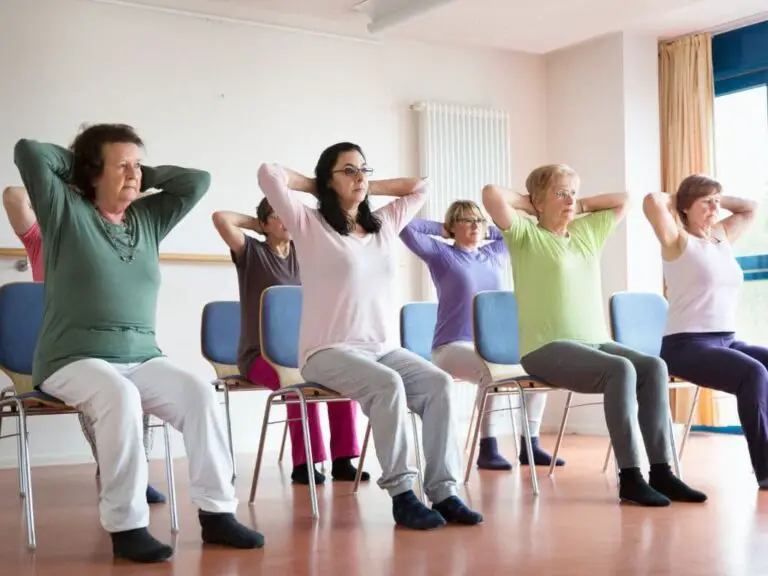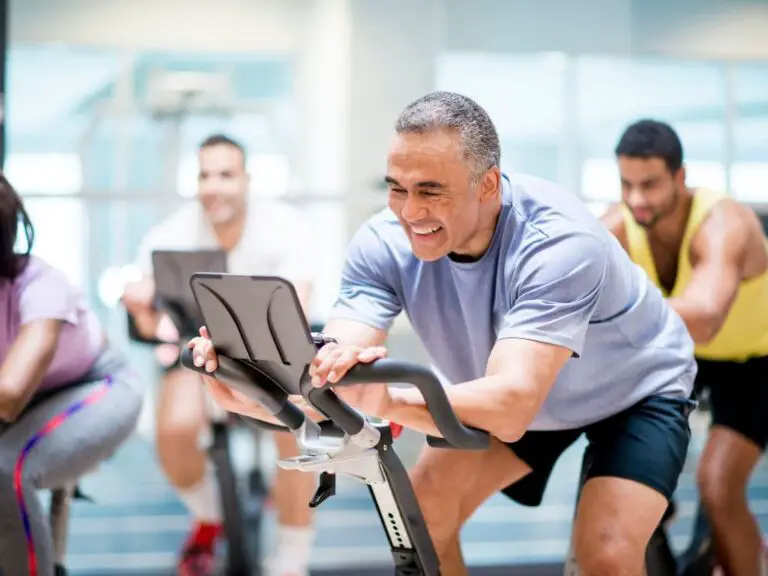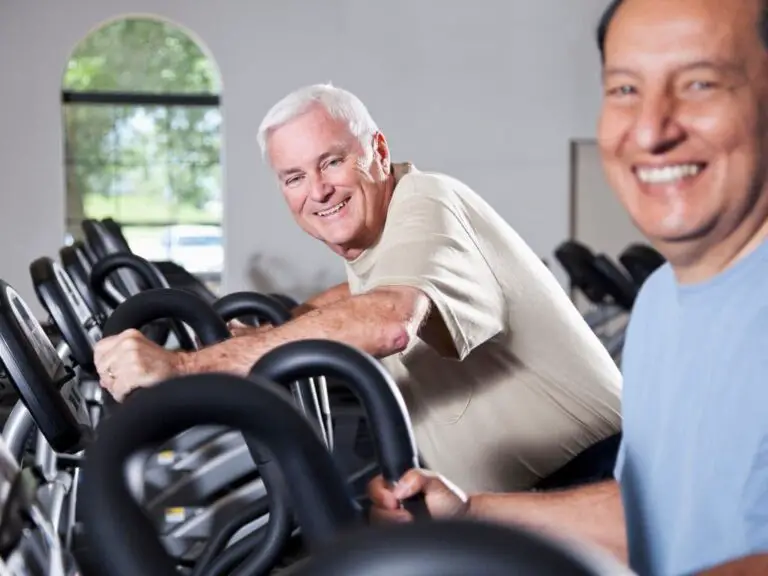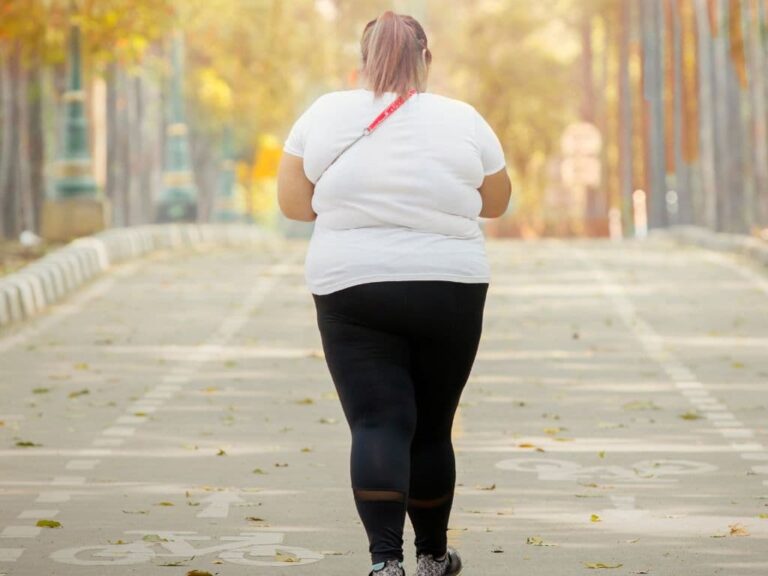Yoga Before or After Shower: What’s Best for Your Practice?
Yoga is an ancient mind and body practice that has become immensely popular in recent years. With its focus on controlled breathing, body postures and meditation, yoga helps improve flexibility, strength, balance and overall health.
But should you do yoga before or after showering?
Whether to shower before or after yoga depends on the type of practice. For hot yoga, it’s beneficial to shower before to cool the body and after to remove sweat and toxins. For slower practices like Yin yoga, showering afterwards is recommended. Always allow a 20-30 minute gap between your shower and yoga for optimal results.
Both routines have their benefits and drawbacks. The ideal time to showerdepends on factors like the yoga style, your body’s temperature regulation and goals. Read on as we explore when’s best to shower for optimal yoga benefits.

What Are the Benefits of Doing Yoga Before a Shower?
Doing yoga before showering has several advantages. The main perk is going into the yoga practice with clean skin and hair.
A refreshing shower helps wake up the mind and body. It boosts blood circulation, bringing oxygen and nutrients to the muscles and joints. Warm water also helps loosen tight muscles and make them more pliable.
Starting yoga on a blank slate minimizes distractions during the flow. You won’t be preoccupied with smells or oils on your body. Your mat and the studio space will also stay cleaner when practicing on fresh skin.
Showering beforehand rinses off dirt, pollutants and microbes from your skin. This helps prevent breakouts and skin infections during the sweaty workout. It also lowers the chances of transferring germs on your mat.
The other benefit is body temperature regulation. Doing yoga with wet hair and skin helps the body cool down. This prevents overheating which can happen in vigorous styles like Hot Yoga.
However, showering right before yoga has some downsides. Exercising on damp skin can lead to chafing. The folds and crevices can become itchy and inflamed. Wet hair swinging around can also be distracting.
Why Should You Not Shower After Yoga?
Showering right after yoga is not recommended. During the intense poses and stretches, toxins are released from tissues into circulation. Abrasive scrubbing right after will drive the toxins back into the system before the body eliminates them.
The heart rate and body temperature are also elevated after yoga. Jumping into a hot shower can put the body into thermal shock. This taxes the heart and nervous system and should be avoided.
Let the perspiration sit on the skin for a bit. This allows the toxins to remain on the surface so the body can eliminate them fully. Stay hydrated and do light stretches as the body returns to normal. Wait at least 20-30 minutes before showering.
What Are the Benefits of Doing Yoga After a Shower?
There are advantages to doing yoga after bathing too. The biggest one is having the shower help cool and cleanse the body after practice.
The skin will be flushed and sweaty after an intense hot yoga or plyometrics class. Showering removes the perspiration along with any oils and salts. This helps rehydrate and close pores on the skin.
If your yoga mat picks up smells, showering after will remove any odor residue from your body. The water also washes away any pollutants or microbes that may have transferred from the mat. This lowers risks of breakouts or infections.
The shower helps bring your heart rate and temperature back down to normal. It prevents any muscle cramps or headaches due to dehydration. The cool water feels soothing on circulatory organs like the heart and skin.
Doing yoga on clean skin minimizes any distractions from body odor during practice too. You’ll feel fresh and focused flowing through the poses rather than self-conscious.
When Is the Best Time to Shower for Optimal Results?
The ideal yoga shower routine depends greatly on the type of practice and your body’s needs. Here are some recommendations:
For hot yoga – Shower before class. The cool water lowers body temperature so you don’t overheat. Avoid showering right after since the heart rate is high.
For Yin or restorative yoga – Shower after class to wash off sweat and relax muscles. The slower pace won’t cause overheating.
For morning yoga – Shower before starting your day to energize body and mind. Do light stretches if muscles are stiff.
For evening yoga – Shower after class to lower your heart rate and relax for bedtime. Hydrate well post-shower.
No matter when you shower, allow 20-30 minutes before and after yoga. This gives time for your shower-warmed muscles to stabilize before stretching. It also allows the flushed post-yoga body to cool off before washing.
What Type of Shower Is Best for Yoga?
Showers for yoga purposes don’t need to be complicated affairs. Focus on a comfortable water temperature and gentle cleansers. Some tips:
- Keep it lukewarm – Very hot and cold showers can shock muscles. Lukewarm water safely hydrates and circulates.
- Limit lengthy soaks – Long hot showers fatigue muscles. Keep showers under 10 minutes for an energizing effect.
- Use gentle cleansers – Harsh soaps dry skin. Use natural oil-based washes after yoga to hydrate skin.
- Rinse away cleansers – Don’t let cleanser residue stay on skin. Rinse thoroughly after washing.
- Pat dry – Rubbing with a towel aggravates sensitive post-yoga skin. Gently pat yourself dry.
- Moisturize – Hydrate skin within 3 minutes of toweling off to seal in moisture.
How Does Yoga Affect Body Temperature and Sweat Production?
Yoga creates heat in the body through movement and breathwork. Asanas engage major muscle groups which increase circulation and warmth. Faster breathing also raises body temperature and heart rate.
Certain styles like Bikram and Ashtanga intentionally heat the room to 104°F+ to warm muscles and increase flexibility. Power yoga and vinyasa flow also build heat quickly through rapid flows.
The heat expands blood vessels near skin, increasing blood and oxygen supply to muscles. But it also makes you sweat to cool the body back down. Without cooling breaks, sweat loss can lead to dehydration.
Yoga helps calibrate the body’s thermostat over time though. As you practice, the nervous system gets better at gauging and reducing heat buildup. Your sweat response becomes more efficient at cooling you faster.
How Can Yoga Help Improve Skin Health?
The benefits of yoga extend beyond muscles and joints. Certain poses also give your largest organ, your skin, a healthy boost.
Inversions and folding poses increase blood flow to the face and neck. Enhanced circulation provides skin cells with more oxygen and nutrients. It also helps flush out toxins for a glowing complexion.
Twisting poses give a gentle massage to organs and tissues. Compression squeezes out waste while stimulating fresh blood and lymphatic flow. This may reduce puffiness and breakouts over time.
Stress relief through breathwork and meditation also reduces cortisol. This hormonal imbalance can drive inflammation and accelerate aging. By lowering stress, yoga helps control hormonal activity and keep skin calm and youthful.
Should You Do Hot Yoga Before or After a Shower?
With hot yoga’s intense heat and sweat, showering before and after is ideal.
Shower before class using gentle cleansers. This prevents oily residue on your skin from clogging pores as you sweat. It also cools your core temperature so you don’t overheat as easily.
After class, rinse off the sweat which contains eliminated toxins and salts. This prevents pores from getting clogged and minimizes any skin irritations. Showering after class also brings your core temperature back down at a safer pace.
Stay well hydrated during the day when doing hot yoga. The high sweat loss can lead to dehydration if not replenished properly.
Should You Do Yin Yoga Before or After a Shower?
For slower practices like Yin yoga, showering after class is best. Yin poses are held for long periods to target joints, fascia and connective tissues. The sustained compression generates internal heat.
However, the floor poses are mostly still so you won’t build up much sweat. Showering before wouldn’t provide much benefit. You’d also end up lying on damp skin and hair which could be uncomfortable.
Shower after class instead to rinse off any mild sweat. The warm water will also relax muscles that have been stretched deeply. Yin compresses tissues around joints, so a shower helps loosen up any tightness.
Hydrate well after class too. Yin’s long holds can squeeze fluids out of joint tissues that need replenishing.
Should You Do Vinyasa Flow Yoga Before or After a Shower?
The flowing sequences of Vinyasa yoga generate internal heat while building sweat. The dynamic movement requires strength and stamina as well.
Shower before class to help warm up your muscles. The water boosts circulation which preps your joints and tissues for the challenging flows ahead.
Shower after class as well to cool down. Rinsing off sweat will stop any inflammation or clogged pores. The water will also wash away lactic acid buildup from the intensive workout.
Stay hydrated between showers. Bring water to sip during your Vinyasa class. The near-constant motion makes it easy to get dehydrated without realizing.
What Is the Ideal Time Gap Between Yoga and Showering?
Its best to allow 20-30 minutes between your shower and yoga practice. This gives your body time to stabilize.
Showering right before yoga leaves skin damp and cool. Doing poses on wet skin can lead to chafing. Going straight into poses can also strain stiff muscles.
After yoga, wait 20-30 minutes before showering. The heart rate and blood flow take time to normalize after practice. Jumping into a hot shower right away forces the system to adapt too fast.
Use the time between yoga and shower to meditate, stretch or rehydrate. Sip electrolyte drinks to replenish minerals lost through sweat. This fluid and electrolyte balance aids muscle recovery.
Can Doing Yoga Immediately After a Shower Cause Any Harm?
Doing yoga immediately after bathing is not recommended but generally not dangerous. With very hot showers, the rapid change in temperature can cause lightheadedness or muscle cramps.
Showering cleans off the skin’s natural oils. Moving directly into yoga poses can lead to chafed or irritated skin. Any dampness can also affect grip during balancing poses.
Long, very hot showers also zap energy levels. Doing yoga while overheated and fatigued can lead to fainting or injury. Listen to your body and rest if you feel drained after showering.
The one risk to avoid is showering right after yoga. The skin and body need time to cool down and eliminate wastes. Take it easy for 20-30 minutes before and after practice.
What Type of Yoga Is Best for Me?
With many styles to pick from, choosing the right yoga depends on your goals and fitness level. Take time to experiment and learn what works for your body. Some great places to start include:
Hatha – For beginners. Slow pace focuses on meditation and fundamental poses to build strength.
Vinyasa – Dynamic flowing sequences with cardio benefits. Builds heat and athletic endurance.
Yin – Targets deeper joint and connective tissues. Calming, meditative long holds.
Ashtanga – Fast-paced and intense style synchronizing breath to movement. Improves stamina.
Iyengar – Uses props like blocks and straps to perfect alignment in poses. Ideal for injuries.
Hot yoga – Heated rooms allow deeper stretches. Expect to sweat intensely.
How Can I Get the Most Out of My Yoga Practice?
To maximize benefits, incorporate these best practices:
- Stay hydrated before, during and after yoga
- Give muscles 20-30 minute before and after yoga to stabilize
- Focus on alignment and proper form over straining flexibility
- Breathe steadily through challenging poses instead of holding breath
- Customize practice to your energy level. Rest when fatigued.
- Shower mindfully using gentle cleansers and natural products
- Listen to your body and don’t push beyond your limits
- Focus on the present moment. Leave worries and tension off the mat.
Conclusion
Finding your optimal yoga showering routine takes experimentation. Keep notes on when you practice best – before or after washing. Stay tuned into your body’s needs for rest, water and warmth.
Aim to give muscles 20-30 minutes of rest before and after class. Shower mindfulness using mild cleansers and lukewarm water. Customize your yoga style and shower temperature to your fitness level and practice goals.
Most importantly, remember that yoga is a journey. Don’t judge yourself or push beyond your limits. Stay present with each breath and allow your body to guide you towards what feels right.
Frequently Asked Questions
-
Do you have to shower after yoga?
After a class of yoga, take a quick shower. When you sweat your body produces toxins. If you do not shower, these toxins can stay and be absorbed into your skin.
-
How can I tone my arms while sitting?
Your arms should be bent at an angle in front of your body so your forearms meet your knees. Your hands should be raised to the level of your shoulders. Next, lower your arms so they meet your knees. Continue this motion for thirty seconds.
-
How do you get rid of flabby arms when sitting?
Step 1. Sit down on your edge, with your palms resting against the seats. Step 2: Push the sides upwards as though you are about to raise your body (don’t lift your whole body, but just your upper arms).
-
Can I do arm workouts sitting down?
While seated at your computer, you can do many arm exercises. You can stretch your right arm muscles by reaching out with your right hand to reach the left. Next, support your right elbow in the crook. Then hold the arm straight. To get maximum stretch, keep your arms straight.
-
Can you build muscle after age 65?
Seniors can still bulk up on muscle by pressing iron. As we age, our muscle mass drops at astonishing rates. Researchers found that lifting weights can help people over 50 not only preserve but even increase muscle mass.
-
Why do I have trouble getting up off the floor?
You can still walk, run, or stand on the ground. You may also have weak core muscles that make it difficult to stand on the ground. Strengthen your core muscles if you find yourself unable to balance while standing up on the ground. Do single-leg exercises such as crunches and toe touches.
-
What is chair rise exercise?
Place your back against a solid chair, with your knees bent. Your feet should be flat on the ground. 2. Place your hands on each side of the chair, keeping your neck and back straight. 3. Take a deep breath and breathe in slowly.
-
Why is it so hard to stand up after sitting?
A combination of factors can cause difficulty in getting up from a chair: weak legs, weakness and other reasons. Stiffness in the back. Poor balance.
-
What’s a chair dip?
Your entire body weight should be held up, with your feet flat on the ground and your legs extended. Before you return to your original position, lower your body so that your elbows are at a 90 degree angle.
-
Can yoga reduce tummy?
Yoga is a great alternative to going to the gym. Yoga can help you lose abdominal fat and give your mind and body a rest.

